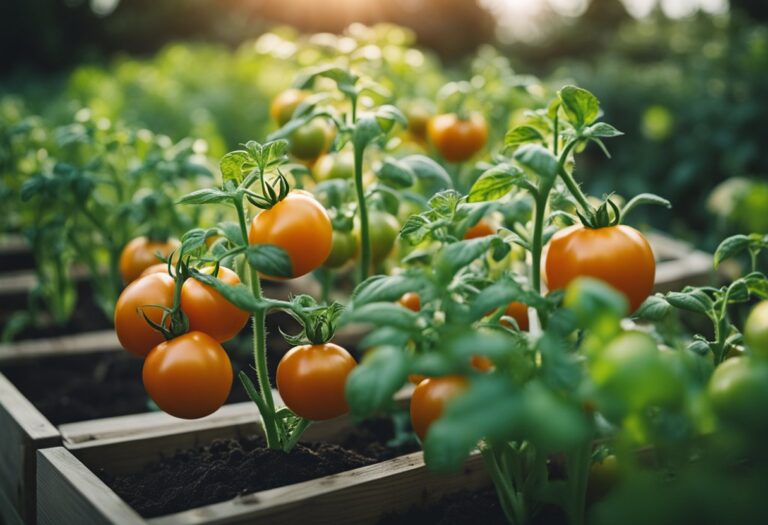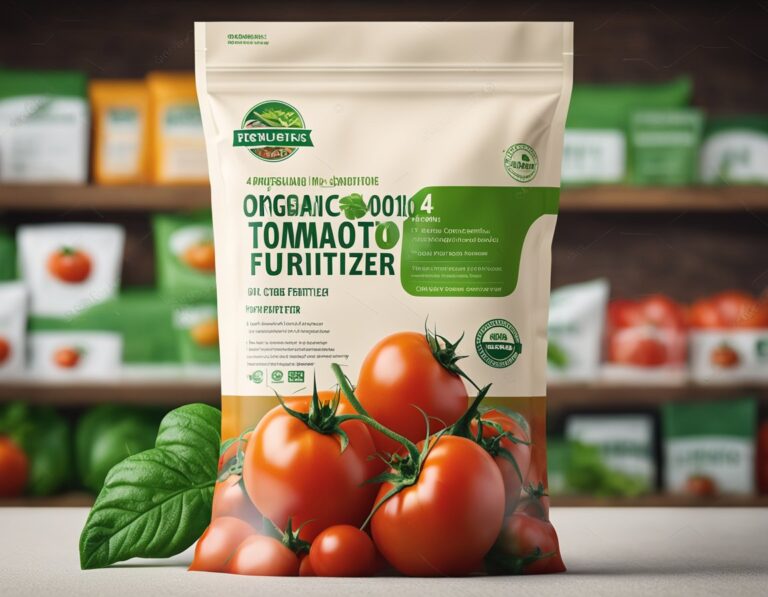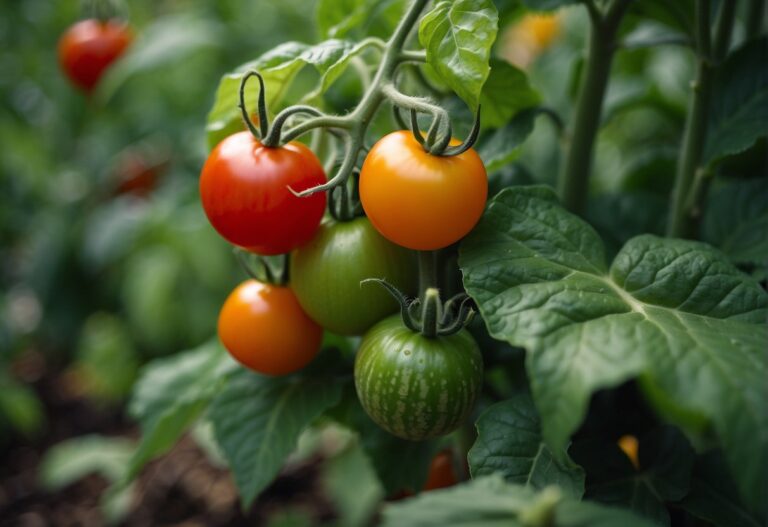Growing Tomatoes from Seed: A Beginner’s Guide
Growing tomatoes from seed is a rewarding experience that can lead to a bountiful harvest of fresh, juicy tomatoes. Whether you’re a seasoned gardener or a beginner, starting your tomatoes from seed is a great way to ensure that you get the exact variety of tomato that you want.
Plus, growing your tomatoes from seed allows you to control the entire process, from start to finish.
To start growing tomatoes from seed, you’ll need to choose the right variety of tomato for your needs and growing conditions. Some popular varieties include cherry tomatoes, beefsteak tomatoes, and heirloom tomatoes.
Once you’ve chosen your variety, you’ll need to start your seeds indoors about six to eight weeks before the last frost date in your area. This will give your plants plenty of time to grow strong and healthy before you transplant them outside.
With the right care and attention, your tomato plants will thrive and produce a bountiful harvest of delicious tomatoes. However, there are some common pests and diseases that can affect your plants, so it’s important to be vigilant and take steps to prevent and treat any issues that arise.
By following a few simple steps, you can grow healthy, vibrant tomato plants and enjoy a delicious harvest all season long.
Key Takeaways
- Growing tomatoes from seed allows you to control the entire process, from start to finish.
- Starting your seeds indoors about six to eight weeks before the last frost date in your area will give your plants plenty of time to grow strong and healthy before you transplant them outside.
- To prevent and treat common pests and diseases, be vigilant and take steps to protect your plants.
Growing Tomatoes from Seed
If you’re looking to grow tomatoes from seed, you’re in luck! Tomatoes are one of the easiest plants to grow from seed, and the process is relatively straightforward. In this section, we’ll cover everything you need to know to get started, including choosing the right seeds, germinating the seeds, and transplanting seedlings.
Choosing the Right Seeds
When it comes to choosing tomato seeds, there are a few things to keep in mind. First, make sure you choose a variety that is well-suited to your climate. For example, if you live in a hot, dry climate, you may want to choose a variety that is drought-tolerant.
Second, consider the size and flavor of the tomatoes you want to grow. There are many different varieties available, from tiny cherry tomatoes to large beefsteak tomatoes, each with their own unique flavor profile.
When selecting tomato seeds, always look for a certified seed source. This will ensure that the seeds are of good quality and free from disease. You can find certified seeds at most garden centers or online.
Germinating the Seeds
To germinate tomato seeds, you’ll need to create a warm, moist environment for them to grow in. You can do this by starting the seeds indoors in seed trays or pots. Fill the containers with a good quality seed-starting mix, and plant the seeds about 1/4 inch deep. Water the soil well, and cover the containers with plastic wrap to create a greenhouse effect.
Tomatoes will usually germinate within 5-10 days of planting if conditions are optimal. Once the first seedling emerges in each tray, remove the plastic covering and turn on your grow lights (or place in your southern window location). Place your grow lights 2-3 inches above your starts so they don’t become leggy.
Transplanting Seedlings
When your tomato seedlings have grown to about 3-4 inches tall, it’s time to transplant them into larger containers. Choose a container that is at least 4-6 inches deep, and fill it with a good quality potting soil.
Carefully remove the seedlings from their original container, being careful not to damage the roots. Plant the seedlings in the new container, burying them up to their first set of true leaves.
Keep the soil moist, and provide your seedlings with plenty of light. As they grow, you may need to provide support in the form of stakes or cages to keep the plants upright. Be sure to water your plants regularly, and fertilize them every 2-3 weeks with a balanced fertilizer.
With a little care and attention, you’ll soon have a bountiful crop of delicious, home-grown tomatoes!
Caring for Your Tomato Plants
Growing tomatoes from seed is a satisfying experience, but it’s important to care for your plants properly to ensure a healthy harvest. Here are some tips for watering, feeding, pruning, and training your tomato plants.
Watering and Feeding
Tomatoes need consistent moisture to thrive, but overwatering can lead to root rot. Water your plants deeply once a week, or more often during hot, dry weather. Aim to keep the soil evenly moist, but not waterlogged. Mulching around the base of the plants can help retain moisture and regulate soil temperature.
Fertilizing your tomato plants can help promote healthy growth and fruit production. Use a balanced fertilizer with equal amounts of nitrogen, phosphorus, and potassium, such as a 10-10-10 or 20-20-20 formula.
Apply the fertilizer according to the package directions, usually every two to three weeks. Avoid over-fertilizing, which can lead to excessive foliage growth at the expense of fruit production.
Pruning and Training
Tomatoes are vigorous growers and can benefit from pruning and training to keep them under control and promote better air circulation.
Pinch off the suckers that grow in the crotch between the main stem and the branches, as these can become competing leaders and reduce fruit production. Remove any yellow, diseased, or damaged leaves to prevent the spread of disease.
Staking or caging your tomato plants can help support their weight and keep them from sprawling on the ground. Use a sturdy stake or cage that is at least 6 feet tall, and tie the plants to the support as they grow. This will help keep the fruit off the ground and reduce the risk of rotting or pest damage.
Dealing with Common Tomato Pests and Diseases
Growing tomatoes from seed can be a rewarding experience, but it’s important to be prepared for the possibility of pests and diseases. Here are some common issues you may encounter and how to deal with them:
Pests
- Aphids: These small, soft-bodied insects can suck the sap from your tomato plants and cause stunted growth. You can try spraying them off with a strong stream of water or using insecticidal soap.
- Tomato hornworms: These large, green caterpillars can eat through your tomato plants quickly. Look for their droppings and remove them by hand. You can also use Bacillus thuringiensis (BT) to control them.
- Whiteflies: These tiny, white insects can suck the sap from your tomato plants and transmit diseases. Use sticky traps or insecticidal soap to control them.
Diseases
- Early blight: This fungal disease causes brown spots on the lower leaves of your tomato plants. Remove infected leaves and use a fungicide to prevent it from spreading.
- Late blight: This fungal disease can quickly kill your tomato plants. Look for brown spots on the leaves and remove infected leaves immediately. Use a copper-based fungicide to prevent it from spreading.
- Verticillium wilt: This soil-borne disease causes yellowing and wilting of the leaves. There is no cure, so it’s important to remove infected plants and rotate your crops.
By being vigilant and taking action as soon as you notice any problems, you can help ensure a successful tomato harvest.
Frequently Asked Questions
How long does it take for tomato seeds to germinate indoors?
Tomato seeds usually take 5-10 days to germinate if the conditions are optimal. The ideal temperature for germination is between 70-80°F.
Once the first seedling emerges in each tray, remove the plastic covering and turn on your grow lights (or place in your southern window location). Place your grow lights 2-3 inches above your starts so they don’t become leggy.
What is the best way to save tomato seeds from fresh tomatoes?
Saving tomato seeds from fresh tomatoes is easy. First, choose a ripe, healthy tomato. Cut it in half and scoop out the seeds and pulp into a bowl. Add a little water to the bowl and let it sit for a few days. The mixture will start to ferment, which helps to separate the seeds from the pulp.
Once the mixture has fermented, pour it through a sieve to separate the seeds from the pulp. Rinse the seeds in a fine mesh strainer and spread them out on a paper towel to dry.
What is the ideal depth for planting tomato seeds?
The ideal depth for planting tomato seeds is about 1/4 inch deep. Planting the seeds too deep can prevent them from germinating, while planting them too shallow can cause them to dry out.
How can I ensure strong growth for my tomato seedlings?
To ensure strong growth for your tomato seedlings, make sure they are getting enough light and water. Provide them with at least 6 hours of direct sunlight each day, or use grow lights if you are growing them indoors.
Water them regularly, but be careful not to overwater them. Too much water can cause the roots to rot.
What are the best tips for growing tomatoes in pots?
Growing tomatoes in pots is a great way to save space and grow fresh tomatoes on your balcony or patio. Here are some tips for growing tomatoes in pots:
- Choose a pot that is at least 18 inches deep and 18 inches wide.
- Use a high-quality potting mix that is rich in organic matter.
- Plant your tomato seedlings about 2 inches deeper than they were in their original container.
- Water your tomato plants regularly, but be careful not to overwater them.
- Fertilize your tomato plants every two weeks with a balanced fertilizer.
When should I give up on tomato seed germination?
If your tomato seeds have not germinated after 2-3 weeks, it’s time to give up and start over. Sometimes seeds can be old or damaged and won’t germinate no matter what you do. If you are having trouble with seed germination, try using fresh seeds or purchasing seedlings from a local nursery.



